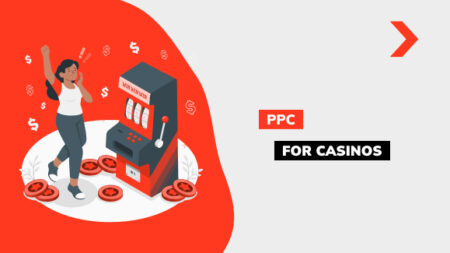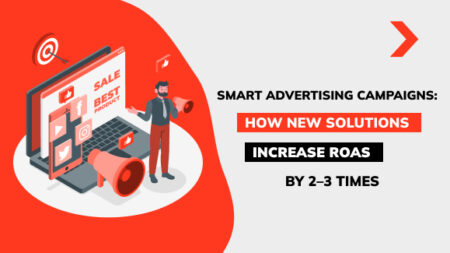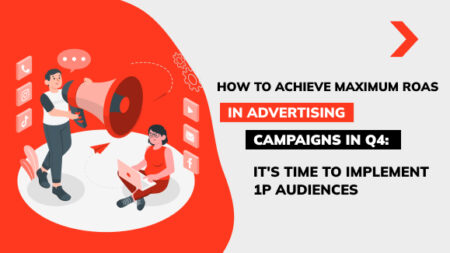Keyword Costs in PPC Advertising: Pricing Strategies
It is well known that a contextual advertising campaign in Google online advertising is a powerful tool included in the arsenal of digital marketing. It can deliver significant and high business results. A properly set up and fully optimized PPC campaign helps increase a business’s online presence, brand visibility, attract additional audience, and boost online sales. However, achieving all growth metrics requires a professional approach to planning and managing PPC advertising. Investing in qualified services for managing Google online advertising campaigns pays off over time by increasing the efficiency of such activities and achieving maximum ROI.

How Does Google Determine Keyword Cost?
Cost click is one of those important metrics in PPC advertising that experts constantly look for ways to reduce. This strategy is immediately flawed because the cost Google Ads directly affects the ad’s position on the webpage and, ultimately, the amount of traffic from the published ad. If a PPC campaign is set up for specific user actions (subscriptions, orders, purchases, form submissions, etc.), then the parameter of payment for clicks on the website becomes irrelevant. In contextual advertising, cost per click often becomes one of the main quality score, demonstrating the effectiveness of the campaign.
- Factors Influencing Keyword Cost
The main factors influencing cost click include competition for keywords. This means that if you only take expensive keywords, the website owner will get both quality and relevance for their ad. Because search engines encourage a qualified user experience, it remains to create a high-quality ad, which will help reduce the daily budget for these services.
- Understanding Quality Score and Ad Rank
In addition to a high-quality ad, you need to take care of the target audience and the geography it is aimed at. To reduce cost per click, it is important to specify the exact geographic location of the company, enterprise, or organization, as well as the characteristics of the target audience. For example, relevant ads targeted at specific cities or specific demographic groups may cost more because they require selecting exclusively expensive keywords.
- The Auction System and Bidding Strategies
Bidding strategies in Google online advertising work in such a way that the cost of a PPC campaign can vary depending on the time of day and days of the week, selected conditions, etc. During peak hours or during auctions (the process of determining the order of ad displays), the price can be higher due to increased demand. The chosen bidding strategy can also affect the final cost. Therefore, it is important to use a keyword planner, indicate the average cost, and set a high bid to increase the likelihood of the ad being displayed multiple times.
How to find the cost of Google keywords?
To determine ads pricing and the specific cost per click in Google online advertising, there are two effective methods you can use. The first method is the Keyword optimization tool, which you can use at any convenient time. The second method involves viewing estimated bids in the campaign setup panel. To understand Google online advertising expenses, you need to open the tools panel in the Keyword optimization tool, select the desired geolocation and language, and then check the forecast in the “average cost” column. The table will show the exact cost of keywords that were used in the business project.
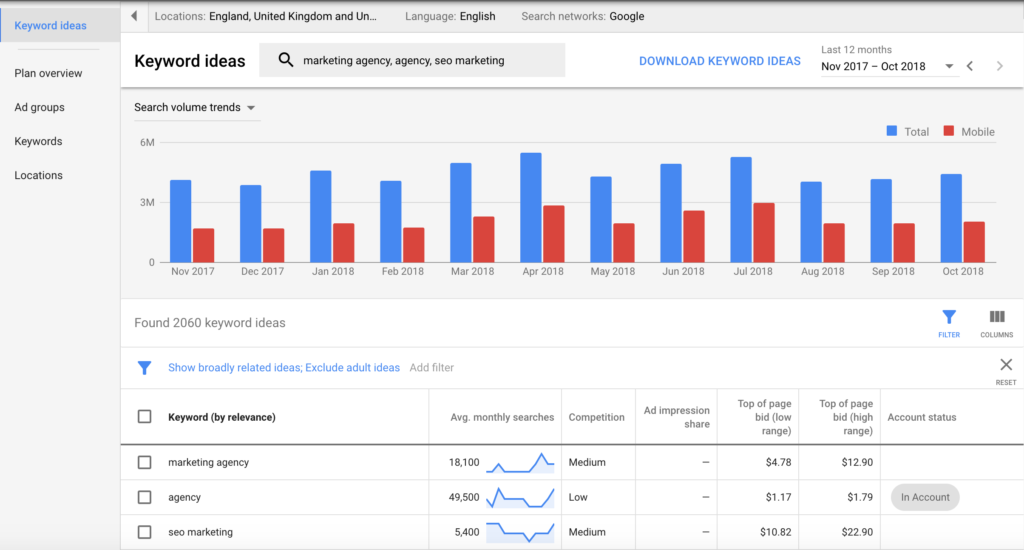
Optimizing Your Cost-Per-Click (CPC)
Cost per Click (CPC) is the metric that indicates the expense incurred by the advertiser for each action, such as a user click ad on an advertisement. This metric is relevant for PPC (pay-per-click) advertising models. Payment per click is considered the most popular model in most contextual and targeted advertising systems.
Quality Score
The quality of the ad in Google online advertising plays a primary and essential role. You should not skimp on creating the ad. Therefore, before developing, creating, and making the ad more relevant and attractive, you need to use keyword Google lists that most accurately describe the product or service. It is also necessary to accurately describe and optimize the headlines and text by adding long-tail keywords, and to test different media channels, including the display network, if applicable.
Ad Rank Auction
Ad rank is most often used to determine where and in which search results the web page with the ad will appear. The ad rank is influenced by the quality metric of the ads at the time of the auction, the size of the bing ads, and the position of the brand’s website relative to competitors. Ads pricing will depend on certain features. For example, keywords for large niche businesses require maximum financial expenditure. Therefore, Google Ads pricing will be more expensive.
Strategic Bidding
Strategic bidding is considered an important aspect of winning auctions. It is the process of analyzing the auction environment and competitors to determine the best bidding strategy. This includes understanding the market, evaluating the strengths, power, and weaknesses of business rivals, and developing a plan to outbid them. Overall, a combination of aggressive bidding and gradual bidding is often the most effective and, accordingly, the most successful.
Budget Control
The formula for calculating the cost of each published ad in Google Ads is quite simple. You need to divide the total Google online advertising expenses by the number of clicks it brought. CPC is equal to the financial budget spent divided by the number of customer clicks. For example, if a business spent $5000 on advertising and received 1000 clicks, then the CPC would be $5. This means that each time an online user performed an action like click ad on an online ad, the average cost click that the business incurred was $5.
Building a Winning Google Ads Budget
When forecasting a budget for Google online advertising campaigns, it’s important to consider that the numbers are just a projection and may not match the actual metrics. Several factors directly influence the budget, including click-through rates, the level of competition in the business sector, the quality of the ads, and the website’s landing page. In practice, it’s common for business owners to adjust their overall budget for Google online advertising when they realize that such an investment is a significant advantage and a true contribution to brand development. However, it’s essential to be prepared for some investments to pay off over a longer period—ranging from several months to a year or more.

Daily Budgets
Only the business owner decides what daily budget to set. They need to specify the amount they can spend each day on Google online advertising. If they find keyword costs in advance, they can estimate the approximate daily financial plan required. This approach allows businesses to expect a higher number of ad impressions when demand is high, although the ads might not always be shown (and this factor should be considered).
Spending Limits
Monthly spending limits for Google online advertising represent the maximum bid the business owner is willing to pay for an advertising campaign over a month. The limits work by setting a specific threshold value that the online system will not exceed, rather than an average cost click. To set a monthly spending limit, one must first configure the daily spending amount that the Google system can use.
Bidding Strategies
Typically, an effective Google Ads account includes several bidding strategies, both manual and various automated strategies based on campaign goals. Business owners will need to test different options at various stages of campaign setup and optimization to determine what works best for their specific type of business. Recently, combining strategies—both manual and automated—has become increasingly popular.
Dayparting & Geotargeting
Geotargeting in Google online advertising is a method of delivering information that considers the local location of target customers. Using geographic targeting allows businesses to select only those customers who are interested in purchasing, excluding irrelevant audiences. Dayparting strategies can be better applied using Google Keyword Planner, as it’s necessary to set conditions so that the bids positively impact the final budget cost (i.e., are minimal for the business) and effectively influence the display of ads on the internet.
Device Targeting
This type of targeting for Google online advertising is available in the settings of the respective platforms. Businesses should target not only users of specific device models (various portable and classic gadgets) but also operating systems, mobile network operators, and wireless network providers. Device targeting is suitable for niche businesses, such as those selling products and services related to gadgets. It is recommended to use this targeting in combination with other settings.
Analyzing Your Google Ads Performance
Analyzing the performance of your Google Ads for your landing page is a promising opportunity to fine-tune your ad campaigns. But how do you know which settings to focus on first and what will work best for the ad you want to launch? To do this, you need to understand the quality metric that help evaluate ad performance. These include metrics like clicks, impressions, click-through rate, cost per click, conversion rate, cost per conversion, and return on investment. If your Google Ads are performing at a high level, your business will receive many clicks, a high click-through rate, low cost per click, excellent conversion rates, and a good return on investment.
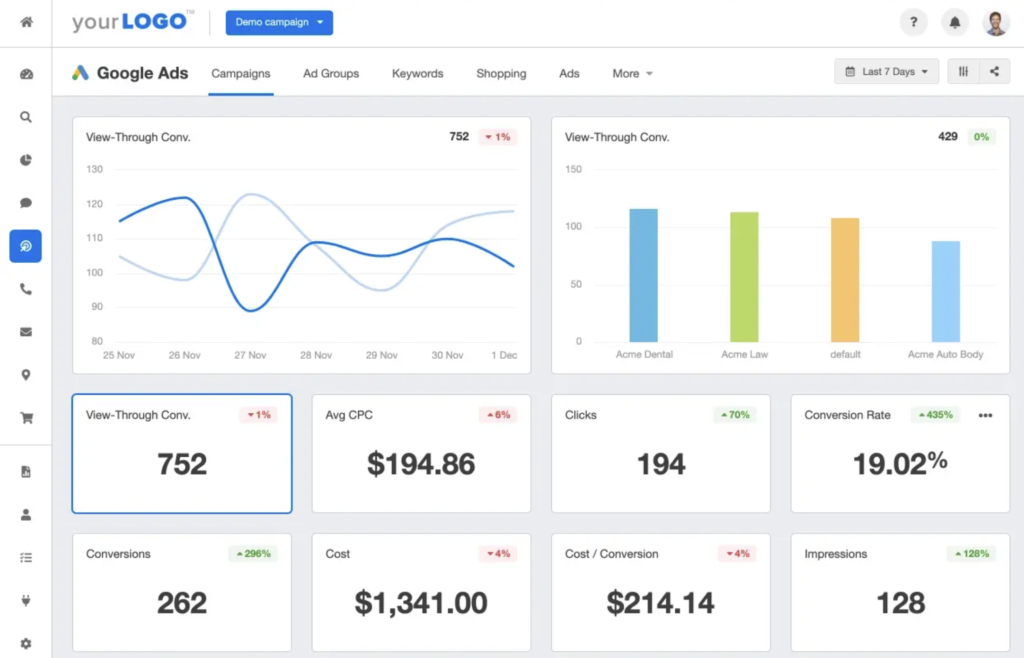
Campaign Management
In the world of internet marketing, there is always room for experimentation and improvement. Therefore, if you aim to achieve frequent and affordable ad impressions in paid search, high conversion rates, and click-through rates for your business website, you will need to try different strategies and approaches. For example, you can increase search volume by implementing marketing technologies, identify find keyword costs to maximize your campaign budget savings, select the most relevant and promising keywords, and take other actions to improve results and enhance your ads.
Quality Score Insights
If a business owner knows the exact cost of keywords and how much financial resources are needed to achieve maximum results when launching ad campaigns, they can effectively allocate their budget through competent analysis. As a result, the brand will receive many clicks from network users, leading to high ad click-through rates, low cost per click, high conversion rates, and a great return on all advertising expenditures.
Ad Rank Analysis
The order in which competing ads appear when searching for specific products or services is determined by their rank. The rank significantly affects the likelihood that an ad will be interesting and valuable to potential customers. Besides the cost per click, the ad rank of competing ads slightly lower in the list also impacts this. Typically, the search ad network automatically determines the ad content and its relevance to online algorithms, so ad quality must be top-notch.
Budget Management
Due to the rapid changes in internet advertising for various types of businesses, it has become crucial for business owners to efficiently allocate financial resources for launching ad campaigns. All factors must be considered – from the cost of keywords to be implemented in the ads to surpass competitors, to the general Google Ads pricing system today (cost per click, the use of marketing tools, leveraging technologies to achieve top positions in paid search, and so on).
Evaluating Overall PPC Pricing Strategies
A pricing strategy is essential for any business in attracting customers. Setting up the pricing structure is considered the most challenging task, one that only the brand owner can solve. Only they can analyze their business income and understand how much Google Ads costs they can allocate for launching online advertising campaigns. Moreover, the pricing strategy should not only be based on Google Ads costs but also on the evaluation of the time spent on developing the advertisements and other steps involved in creating the ad campaign.
PPC Placement
To expand the search volume when launching advertising campaigns, it is important to place ads on top and relevant online platforms. This includes not only the Google Display Network or the Google search engine but also other famous, well-known, and popular web resources. Entering the global market means that you will have to publish ads not only on paid web platforms but also on free ones. It is necessary to use all available and promising methods to promote the brand.
Budget Distribution
The search volume of published ads can change depending on the budget allocated by the business owner. Essentially, each search network should broadcast the business’s ads, reaching the maximum number of online users, and so on. Here’s what needs to be considered: about 70% of the total budget should be allocated to proven online channels whose effectiveness has already been confirmed, 20% can be invested in testing new campaigns (potentially having a high chance of success), and 10% can be used to test channels that are not typical for the specific business.
Industry Competitiveness
This is one of the main criteria for increasing market share and establishing business leadership in the industry. Competitiveness means the ability to withstand other players (competitors), attract, and retain consumers with fewer resources. Therefore, a high level of competitiveness achieved through well-thought-out advertising will allow the brand to create a strong and authoritative image, achieve significant success in its field, and increase conversions, sales, and other metrics.
Mastering Keyword Selection for Optimal ROI
Keywords for any advertisement should be chosen not only based on relevance. It’s important to pay attention to high-frequency, medium-frequency, and low-frequency keywords. Selecting and compiling lists of key phrases should be done using both paid and free online services that identify words according to the business sector. The best solution is to use Google Keyword Planner, which helps analyze keywords for your search network ads. It will automatically select the phrases, quotes, and expressions that precisely match the brand’s theme, thereby reducing targeting costs and more.
Keyword Relevance
When promoting a business website and launching targeted advertising online, it is crucial to identify ineffective keywords and add those that will truly be beneficial. This involves selecting relevant keywords that not only highlight the strengths of the business, reinforce its reputation, and emphasize its authority, but also help achieve high rankings in advertising positions and search engine results.
Profitability
Profitability directly impacts the optimization process. By enhancing the relevance of key phrases, words, quotes, expressions, and sentences, a business owner can expect improved quality metric, adjust the match type for ineffective keywords, and remove duplicate keywords from their ads or account lists. It is very important to identify unprofitable keywords immediately and remove them.
Competitive Landscape
Through the careful selection of unique, varied, and thematically relevant keywords (in line with the business field), one can create healthy competition in the modern market. Competitors will find it challenging to surpass a rival who has proactively utilized keyword research services in their business project, leading to high conversion rates, traffic, and overall online sales.
Keyword Research Tools
By using such a relevant service as keyword research, one can not only select the most useful, promising, and current keywords for launching online ads but also create a fully effective advertisement that will be well-received by online algorithms and easily understood by users. Properly chosen keywords can attract buyers to the online purchasing process.
FAQ
Should you pay for branded keywords?
Properly selected keywords for a business project will bring additional audience to the website, significantly improve leads, and increase online sales. Therefore, it is advisable to not only rely on free keyword search sources but also allocate additional investments from the budget and use paid online services. They can offer such relevant keywords that will work effectively when added to the advertising campaign.
What is the difference between CPC and PPC?
Cost-per-click means “the cost of one click.” Simply put, it’s the price of one user clicking on a specific ad once. To calculate this metric, you need to use a simple formula: divide the expenses by the number of clicks performed by online users. Pay per click, on the other hand, means “payment for one click.” This model of Internet advertising payment entails a specific payment from the business owner for each online user attracted. Such a user is considered someone who clicked once on a specific ad.
How much should I charge for keyword research?
The service of keyword research remains a useful practice today. No one will refuse it, and it’s practically impossible to do so. It’s worth noting that the service of gathering various, relevant, competent, and most suitable keywords for the industry requires some time investment. Therefore, the service can be priced depending on the time spent on research or based on the number of gathered relevant, effective, and current keywords. This is all negotiated with the business owner on an individual basis.
How many keywords should I use for Google Ads?
In this advertisement, by default (by terms), you can add no more than 20,000 words. This means that there should not be more than this number of keywords or targeting objects (in one ad group). In principle, Google’s system provides some limitations that all online users and business owners can familiarize themselves with on the Internet because this information is absolutely available and open to everyone. Speaking of oversaturation, it is not recommended to add more than 3-10 similar keywords in one small ad.
How much does Google Ads cost-per-click?
The average determined cost can always be calculated independently, but it’s better, of course, to entrust this task to experts (to save personal time). It is computed based on the actual price per click (based on the real amount the business owner paid for one click on one ad). Naturally, the final amount may significantly differ from the maximum price the business owner is willing to pay for one click (but this amount cannot exceed the one set in the settings). Business owners should always calculate and plan their budget in advance.


